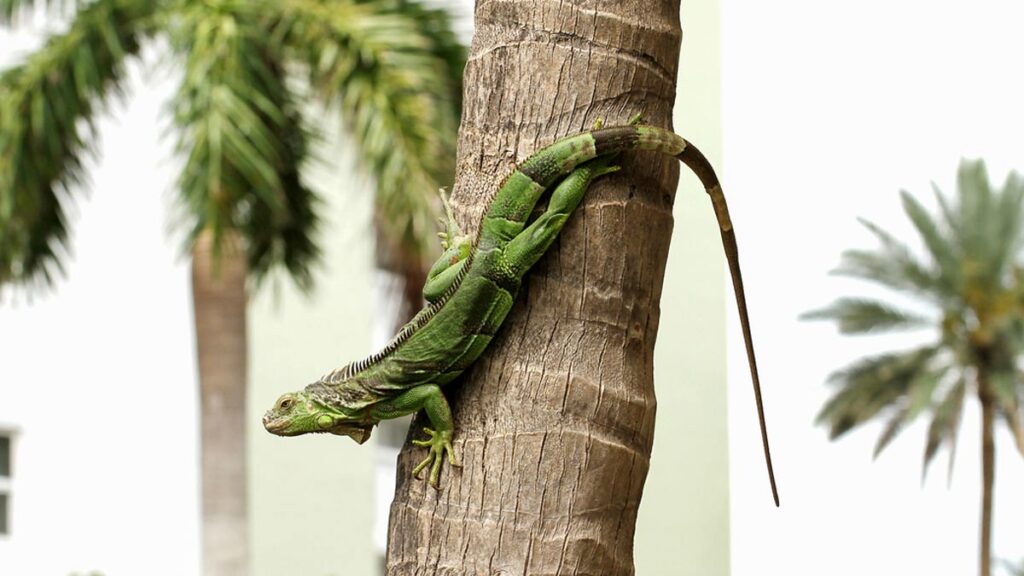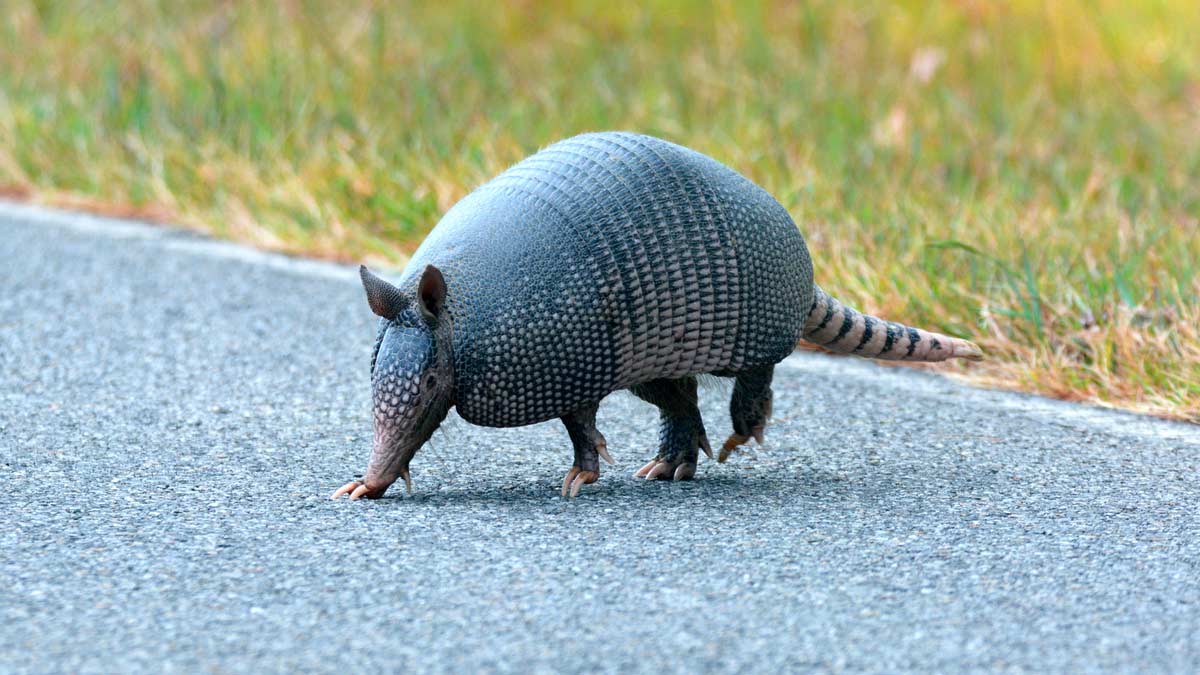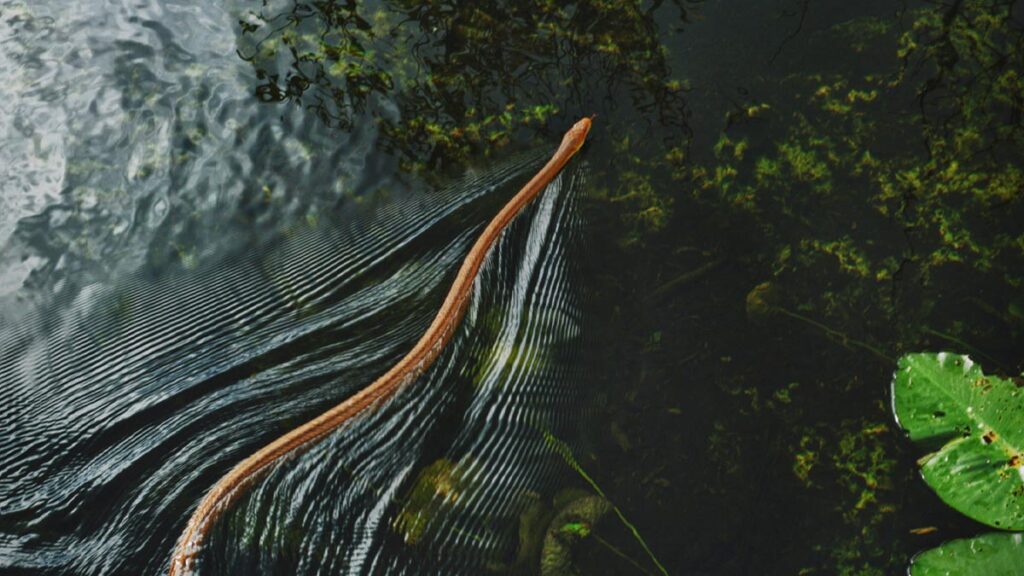
Armadillos in Florida
Dangers, Removal, and Coexistence
Updated on: January 2024

Armadillos, once considered exotic creatures in the wilds of Florida, have now become increasingly prevalent in urban and suburban landscapes. While they may have a unique appearance and behavior, it’s important to recognize and address the potential hazards they bring as these armored mammals can pose risks both to human health and property integrity.
Armadillos have been known to carry diseases such as leprosy, which can be transmitted to humans through contact with their bodily fluids. Additionally, their tendency to dig burrows can lead to structural instability and property damage. The rapid expansion of their population in residential areas has heightened the need to address the challenges they present.
Armadillos are known to carry the bacteria that causes leprosy, also known as Hansen’s disease. While the risk of transmission to humans is relatively low, this fact highlights the potential health concerns associated with armadillos in Florida and underscores the importance of proper handling and coexistence strategies.
Fortunately, there are methods available for removing armadillos from properties in Florida. Homeowners can consider humane trapping techniques or seek assistance from professional wildlife removal services. However, the balance between maintaining ecological harmony and safeguarding human interests requires a comprehensive understanding of armadillo behavior, the associated health risks, and the available removal strategies. Therefore, adopting proactive measures to manage armadillo encounters is important for the well-being of both residents and the local environment.
Find What You Need
Health Risks and Handling in Florida
Among the range of potential dangers, one primary concern of armadillos in Florida is the transmission of diseases which should warrant cautious consideration. Armadillos are natural hosts of the leprosy bacteria, Mycobacterium leprae. While the occurrence of leprosy transmission from armadillos to humans is rare, the risk exists, especially when direct contact is made with armadillo bodily fluids, such as saliva or blood. Not all armadillos carry leprosy, but the potential exists, and taking preventive measures is essential especially for those who handle armadillos.
When handling armadillos, individuals should exercise caution to minimize the risk of disease transmission. Wearing gloves and using appropriate protective gear can help prevent direct skin contact with the animals. Avoiding activities that involve handling armadillo carcasses, such as roadkill. If direct contact does occur be sure to thoroughly wash your hands with soap and water.
Armadillos can also carry ticks, fleas, and other parasites. These pests can latch onto the armadillos and then be transported into residential areas, posing health risks to both humans and pets. Ticks, in particular, can carry diseases such as Lyme disease and Rocky Mountain spotted fever. Given Florida’s warm climate, these pests can thrive year-round, heightening the concern for disease transmission. Therefore, individuals should also take precautions to protect themselves from these potential disease vectors by using insect repellent and wearing long sleeves and pants when in areas where armadillos are prevalent. This can reduce the risk of tick and flea bites.
Being aware of the potential dangers posed by armadillos and taking preventive measures such as avoiding direct contact with armadillos and their habitats, as well as implementing effective pest control measures for ticks and fleas, can greatly minimize health risks. Additionally, addressing armadillo burrows promptly can prevent property damage and reduce the likelihood of encounters that may lead to disease transmission.
Take Away
In Florida, the increasing presence of armadillos in urban and suburban areas brings potential dangers, from disease transmission to property damage. While removal methods exist, a balanced approach is key. Homeowners can proactively deter armadillos by eliminating food sources and using physical barriers. Preserving natural predators and participating in educational initiatives supports coexistence. Striking a balance between human interests and ecological well-being ensures a sustainable relationship with these creatures.
Impact on Property and Ecosystem
Armadillos have a natural behavior of digging burrows which can lead to significant property damage in Florida as well as harm to the ecosystem.
Property Damage
These burrows, often hidden beneath lawns or near structures, have the potential to compromise the stability of foundations, driveways, and walkways. This can result in costly repairs for homeowners and property managers. Additionally, armadillos’ burrowing activity can disrupt irrigation systems and damage the roots of plants, causing landscaping and gardening efforts to go to waste.
Ecosystem Disruption
Armadillos can have unintended consequences on the local ecosystem. Their burrowing activity can disturb the habitats of other wildlife species, leading to disruptions in their natural behaviors and potentially altering the delicate balance of the ecosystem. Moreover, the predation of armadillos on insects and invertebrates can impact the populations of these creatures, which play vital roles in maintaining ecological equilibrium.
Striking this balance between addressing property damage and considering the broader ecological impact requires a comprehensive approach to armadillo management in Florida.
Understanding Armadillo Behavior
Armadillos’ growing presence in urban and suburban areas of Florida can be attributed to several factors. One significant reason is the availability of food sources. Armadillos are omnivorous creatures that feed on insects, grubs, and small invertebrates found in gardens and lawns. The urban environment often provides a consistent supply of these food sources due to the presence of ornamental plants, lawns, and other landscaping features that attract insects.
Armadillos are most active during the early morning and evening hours, which coincides with periods when insects are also active. Their behavior patterns can vary with the changing seasons. During the warmer months, armadillos tend to be more active and visible, searching for food and establishing burrows. This heightened activity can lead to increased encounters with residents. As temperatures drop in the cooler months, their activity may decrease, and they might spend more time within their burrows.
Understanding these behavior patterns is important for residents to adopt effective strategies for managing armadillos on their properties. Implementing preventive measures during peak activity times and identifying the signs of armadillo presence can help homeowners coexist with these creatures while minimizing the risks they pose.
Methods, Regulations, and Coexistence with Armadillos
In assessing the impacts and damages that armadillos can have on Florida property, ecosystems, and individuals, it is important to create methods that are effective in mitigating their associated risks.
Addressing Armadillo Infestations and Legal Considerations
When it comes to dealing with armadillo infestations in Florida, navigating the legal landscape is imperative. Armadillos are a protected species in the state, which means that their removal is subject to specific regulations. While homeowners are allowed to remove armadillos from their property, it must be done humanely and in accordance with the law. Importantly, relocating armadillos to other areas is discouraged due to potential disease transmission and the risk of disrupting new habitats.
Humane Removal Methods
Prioritizing the well-being of both the animals and the environment, humane methods for armadillo removal are recommended. Employing live traps, such as those offered by Havahart One-Door Animal Trap, which are baited with insects or fruit, can effectively capture armadillos for subsequent release. Regular checks of these traps are essential to prevent unnecessary stress on the captured animals. Additionally, repellents containing substances like garlic or castor oil can deter armadillos by emitting odors they find unpleasant, encouraging them to seek alternative locations.
Professional Wildlife Removal Services
For homeowners seeking professional assistance, specialized wildlife removal services can provide expertise in armadillo management. These experts are well-versed in armadillo behaviors and habits, enabling them to employ effective and humane methods for removal. The costs for professional removal services can vary based on factors such as property size and the extent of the infestation. Engaging with multiple providers and discussing their methods and costs empowers homeowners to make informed decisions tailored to their unique circumstances.
Creating a Harmonious Environment
Promoting a balanced coexistence with armadillos requires proactive measures on the part of Florida homeowners. By reducing the appeal of properties to armadillos, the likelihood of infestations can be minimized. Eliminating potential food sources involves securing garbage cans tightly, minimizing outdoor food debris, and covering compost piles. Furthermore, removing excess vegetation and overgrown bushes eliminates hiding spots for armadillos and their insect prey.
Implementing Effective Barriers
Physical barriers like fencing and wire mesh are effective deterrents against armadillo access. Buried fencing portions prevent armadillos from burrowing beneath, while wire mesh around structures further impedes their access. Embracing a holistic perspective acknowledges that while armadillos present challenges, they also play a role in controlling insect populations. Responsible wildlife management involves coexisting without causing harm to the creatures or disrupting the local ecosystem. By implementing preventive measures and adopting a balanced approach to armadillo management, homeowners contribute to the preservation of both human interests and the natural environment.
By implementing these methods and understanding how to humanely control armadillo populations, residents can effectively coexist with these animals and mitigate the risks to their health and property.
Natural Predators and Population Control
The ecosystem in Florida relies on predator-prey relationships, and armadillos are no exception. While armadillos don’t have many direct predators, some animals do play a role in controlling their population indirectly. For instance, large birds of prey like hawks and owls may target smaller armadillos. Additionally, domestic dogs and even some larger snakes have been observed preying on armadillos.
Preserving these natural predators can maintain ecological equilibrium and by allowing these predators to thrive, their presence can help regulate armadillo numbers naturally without the need for intensive human intervention. This balance not only benefits the ecosystem as a whole but also aids in managing the potential hazards associated with armadillos. Promoting a healthy predator population contributes to the overall health of Florida’s diverse wildlife and fosters a more sustainable coexistence between humans and animals.
Educational Initiatives and Awareness
Florida has recognized the importance of fostering awareness and understanding of armadillos and their place in the local ecosystem. Ongoing educational programs, often led by wildlife conservation organizations and government agencies, aim to promote responsible wildlife coexistence. These initiatives provide valuable information about armadillo behavior, potential dangers, and effective strategies for managing encounters.
Participating in these educational programs can allow for communities to proactively address armadillo-related conflicts as their residents can learn about the significance of maintaining ecological balance and how their actions can contribute to preserving both human interests and the well-being of local wildlife. Embracing these initiatives allows for individuals to make informed decisions when it comes to armadillo removal, property management, and responsible engagement with the environment. Encouraging community involvement in these programs creates a sense of coexistence and sustainable wildlife management in Florida.


